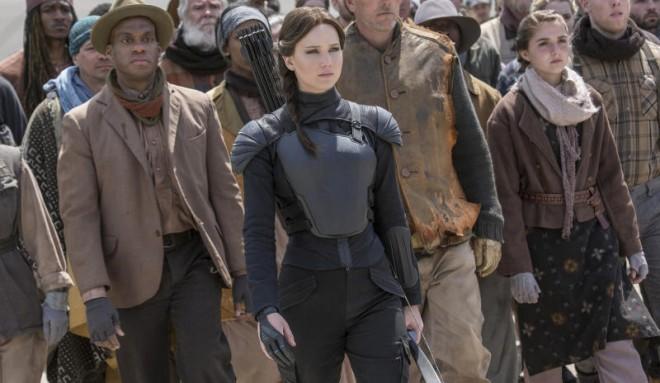“It’s the scene right after she cries with the cat, and she’s back out into the woods going hunting again,” director Francis Lawrence told. Yes, “she” is Katniss Everdeen, the seminal role that catapulted Jennifer Lawrence (no relation to Francis) to global superstardom and proved beyond all doubt that Hollywood could make a global blockbuster action franchise centered around a single, and singular, female character.
And in Mockingjay – Part 2, Katniss, her compatriots, and her enemies — including Peeta Mellark (Josh Hutcherson), Gale Hawthorne (Liam Hemsworth), Plutarch Heavensbee (Philip Seymour Hoffman), President Coin (Julianne Moore), and President Snow (Donald Sutherland) — really go through it, as the rebellion that has adopted Katniss as the Mockingjay, its spiritual mascot, fights its way to the Capitol to depose Snow for good. As is the case in Suzanne Collins’s novel on which the Mockingjay films are based, people die, many of them beloved, and the ones who are left are irrevocably scarred, both inside and out.
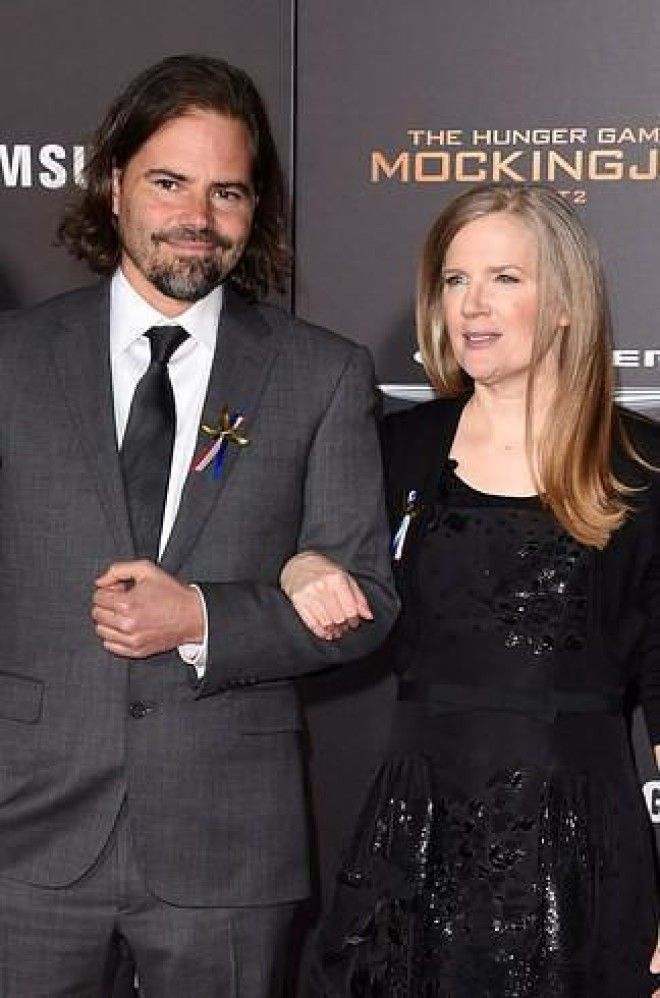
Peter Craig and Suzanne Collins
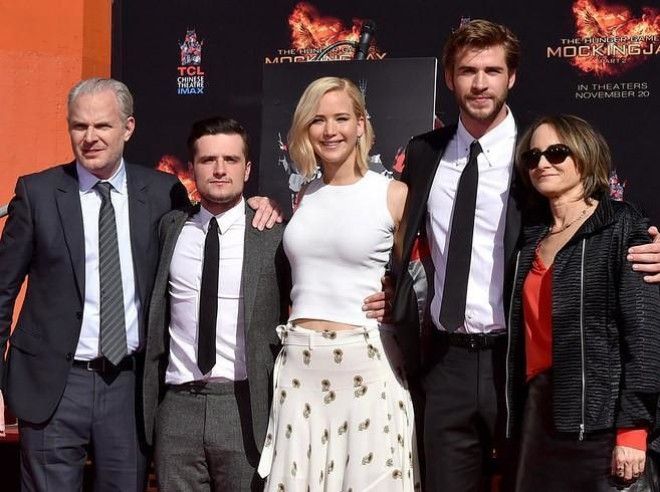
Francis Lawrence, Josh Hutcherson, Lawrence, Liam Hemsworth, and Nina Jacobson
Making those moments work in a mainstream feature film — as opposed to Collins’s psychologically driven novel — was a tall order for Lawrence, producer Nina Jacobson, and screenwriter Peter Craig, all of whom spoke with BuzzFeed News about the challenges they faced adapting the second half of Collins’s novel for the big screen. Like with adapting Mockingjay – Part 1, the trio followed the extensive outline, or “scriptment,” written by Collins, who received an “adaptation by” credit on both Mockingjay films. (Craig took over primary screenwriting duties once Empire co-creator Danny Strong left the project after writing the early drafts.)
All three credit Collins for zeroing in on the core objective that drives Katniss in each Mockingjay film, and differentiates them as well. “The first movie is, for Katniss, about getting Peeta back [from the Capitol],” said Jacobson. “The second movie is about getting revenge against Snow — assassinating Snow.”
Unlike Mockingjay – Part 1, however, which deviated extensively from Collins’s text to depict how the rebellion was playing out in the various districts of Panem, the filmmakers knew the concluding movie in this franchise would need to hew closely to Collins’s book.
“There’s a lot more plot in it,” said Craig. “There were all of the much bigger iconic moments from the book that the fans loved and wanted to see. So the challenge was just how much things stacked up on top of each other. We had to make sure that we were servicing all of it and were true to all of it. Plus, I think all the things Suzanne really wanted to get across in the book were all really in Part 2.”
Even so, the filmmakers still found room to make some pointed and surprising changes from Collins’s book. And that started with…
Finding room for Johanna
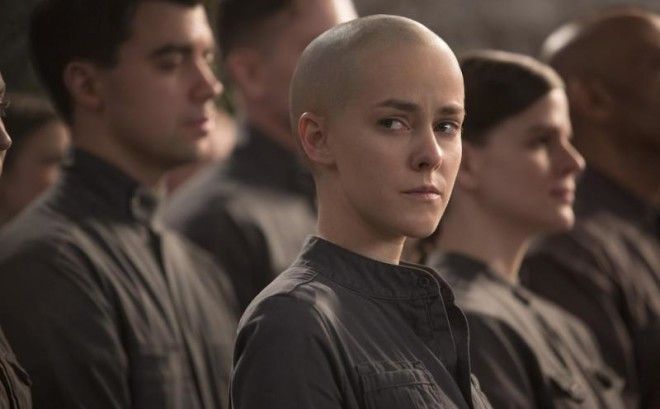
In Collins’s novel, after she and Peeta are rescued from the Capitol, former victor Johanna Mason (Jena Malone) begrudgingly partners, and eventually bonds, with Katniss, as they both go through a grueling training regimen and punishing final exam to prove to President Coin that they are fit to join District 13’s military assault on the Capitol.
Katniss succeeds, and Johanna does not. None of it, however, made it into the film.
“We were all very wary of training,” said Lawrence. “Training sequences quite often get montage-y, and I’m not a huge fan of that. To spend the time to do it right so it doesn’t feel like a montage would be also eating up a lot of time.”
Added Jacobson, “I think nobody looks at Katniss Everdeen and thinks she needs training on how to be a soldier.”
The problem, however, was that everyone loved Johanna as a character, and Malone’s portrayal of her. “So, the trick was in trying to maintain Johanna’s presence without the training,” said Lawrence.
And that unenviable task fell to Craig, who had to figure out how to make Johanna come to life in just two scenes with Katniss, and one group scene at the end. “I just tried to get at that she was the last shove that Katniss needed [to get to the Capitol],” Craig said. “That was somebody who could really look her in the eye and say, ‘Go do this.’ Johanna had kind of given the most.” Craig said that there was even discussion about letting Johanna accompany Katniss to the Capitol, but Collins vetoed that quickly. “Suzanne felt very strongly that they wouldn’t let her go,” he said with a laugh. “Morphling is not heroin, but, you know, she’s a morphling addict at that point. … There was just no way.”
Deciding how Katniss makes it to the Capitol
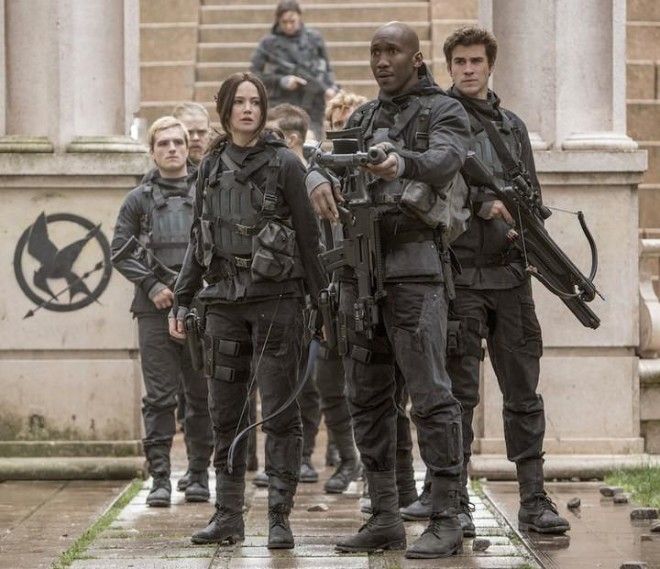
Rather than wait for an official assignment to go to the Capitol from Coin like she does in the novel, Katniss decides to stow away on a supply ship to the front lines, in defiance of her explicit orders to stay behind. “It was really about making her active, especially knowing going into Mockingjay – Part 1 that she’s kind of sidelined and being manipulated,” said Lawrence. “In this one, we really wanted to get that motor of I have to go after Snow going. To have her assigned to a squad doesn’t feel like it’s a motor towards Snow. But if she takes off on her own to get to the Capitol, you feel like the story just kicks into a new gear.”
Tracking Peeta’s journey from wringing Katniss’s throat to sharing her bed
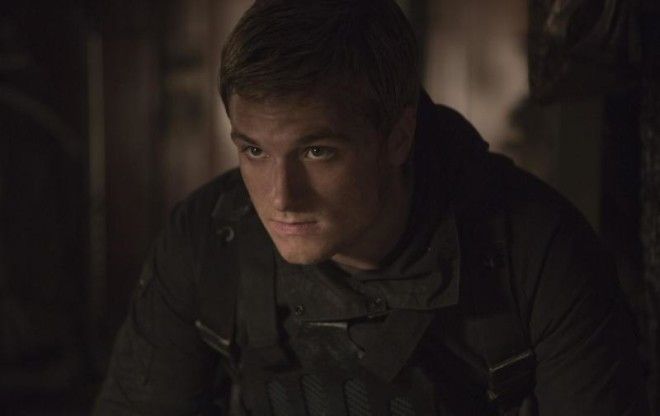
Mockingjay – Part 1 ends with Peeta, brainwashed (or “hijacked”) by Snow, nearly throttling Katniss to death after he’s rescued from the Capitol. Part 2 chronicles his recovery, which is so thorough that, by the end of the film, Katniss feels safe enough to share his bed. That is quite a journey, and Jacobson said it’s one of the key creative reasons she believed Collins’s book needed to be split into two movies.
“To be hijacked and then recover in one movie, I don’t even know how we would have done that,” she said. “You would have had to get him back so soon, and then he’d be a mess, and then he’d have to get better really quickly. So we needed the time, to give him all of the second movie to recover.”
To do that, Craig cut early scenes that emphasized how much loathing Peeta had for Katniss, and instead focused on carefully including scenes with Peeta and Katniss together. “My idea was basically that … by exposure to her, he’s gradually brought back to remember what he actually felt about her,” he said. “It’s almost like, to make the antidote for a snake bite, you make it out of the venom.”
And yet again, Collins provided a key insight that helped Craig unlock what keeps drawing Katniss back to Peeta. “I remember a conversation with Suzanne, [about how] towards the end, when they’re ready to make their final push towards [Snow’s] mansion, Peeta’s the one who has to really convince her that all of this is worth it, and he has to be the one who really speaks to her,” Craig recalled. “Because over the course of all four of the movies, he’s really the only one who’s been through everything she’s been through, and he’s really the only one who understands the completely unique position she’s in.”
Showing President Snow’s decline…
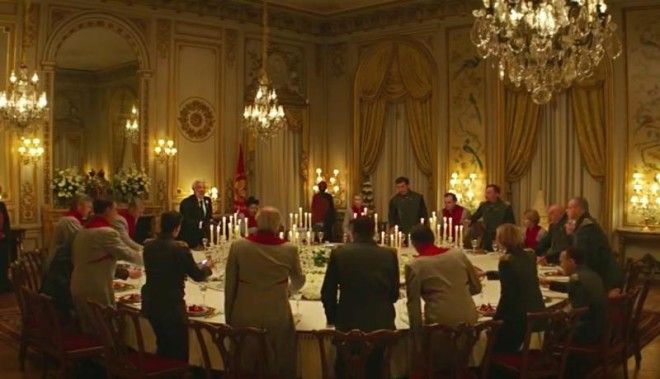
The Hunger Games films have always deviated from the books by cutting away from Katniss’s point of view to depict events that are happening beyond her perspective. Sometimes, however, those scenes don’t quite pan out as expected. “It’s kind of tricky,” said Lawrence. “There was a scene that we had with Snow and Peeta in Mockingjay – Part 1 that got cut because it didn’t work.”
The problem with that scene — which was released online earlier this year to great fanfare — was that it was, in essence, not about Katniss. So with Mockingjay – Part 2, the filmmakers made sure to always connect her in some meaningful way to every scene outside of her point of view — like when Snow watches Katniss get shot, and then raises a toast with his inner circle.
“There’s that connection that links the two,” said Lawrence. The scene itself becomes something of a surprising fake-out — at first, it seems that Snow is toasting Katniss’s death, when he is instead using the occasion to poison Antonius (Robert Knepper), the military commander who lost District 2, while toasting, in essence, the inevitable end of his reign.
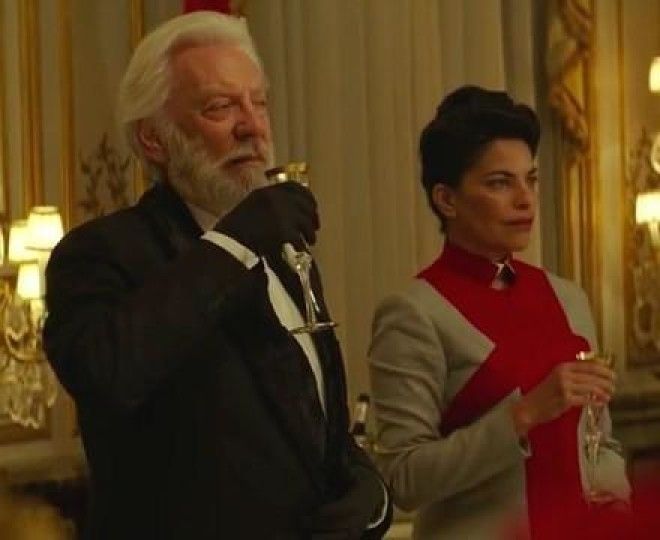
“I was always really fascinated with trying to find the real life of Snow,” said Lawrence. “And, of course, there are a lot of choices one can make. He can think he’s going to win until the end. [But] I decided that I liked the route of Hitler in the film Downfall, where you witness it all crumble around you.”
For Craig, it was also a chance to show one of Snow’s key tactics that you only hear about in Collins’s book. “I love that he was a poisoner,” Craig said. “So I thought, let’s have him poison one of his advisers. We had a really distinct purpose that we wanted to accomplish with that scene too: that Snow really wanted this to be like another arena, and he wanted everybody to see it. It was part of his madness.”
As for Snow’s final denouement, Lawrence decided not to leave the cause of his death ambiguous as it is in Collins’s novel — we clearly see a mob of Panem rebels swarm him to rip him to shreds, and Katniss gets the satisfaction of seeing it too. “Having made a decent amount of movies now, and been in editing rooms, and had [test] screenings, you [would] get that question of, like, What happened to Snow?” said Lawrence. “You don’t want to have a bunch of people tune out at the end of the movie wondering what happened. It’s just not the kind of loose end that would work for us.”
…and showing President Coin’s ascent
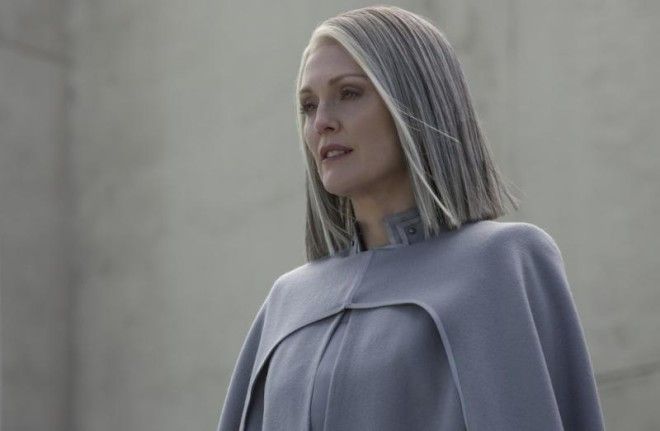
“In the books, you only ever see Coin from Katinss’s point of view, and Katniss pretty much doesn’t like her from the get-go,” said Jacobson. “To a teenager, she’s like this sort of mean authoritarian figure.” Instead, the filmmakers decided that by allowing us to see Coin outside of Katniss’s perspective, we could watch her evolve from the efficient and egalitarian leader of District 13 in Mockingjay – Part 1 into a calculating and ruthlessly savvy politician bent on consolidating her own power in Part 2. And one major reason for beefing up Coin’s journey was the actor who actively pursued the chance to play her. “We had Julianne Moore!” said Jacobson. “Like, come on! You want to give that person some great stuff to play.”
For Part 2, that meant subtle changes to Moore’s hair, makeup, and wardrobe, building in some knowing glances from Plutarch, and creating a scene after Katniss sneaks away to the Capitol in which Coin tells Plutarch, “I want everyone to know whatever game she’s playing, she’s playing for us.”
“If you don’t see her at all, it feels very abrupt that she comes back and she’s become somebody so much more calculating,” said Craig. “It was good to see her begin to understand the ways that she could manipulate public opinion. It helped to make her seem much more strategic, and to let us in on the fact that some of these really shrewd decisions — Machiavellian decisions, actually — were actually coming from her, and it wasn’t Plutarch anymore.”
Making room for Commander Paylor

Coin’s plans, of course, are cut short by the arrow Katniss shoots through her heart — which also led the filmmakers to write in more scenes for the woman who would take her place, Commander Paylor (Patina Miller). So Miller is there in District 2 when the rebels attack The Nut, and she’s the one who addresses the rebels before their incursion into the Capitol.
“We had to try to get her in front of people as much as possible so that people had a little bit of a sense of who she was,” said Craig. “We needed to really establish that she was a good option. She wasn’t — especially after two supposed tyrants — vying for the presidency at that point. It’s good to know that this was somebody who had more morality.”
Finding the right line for violence
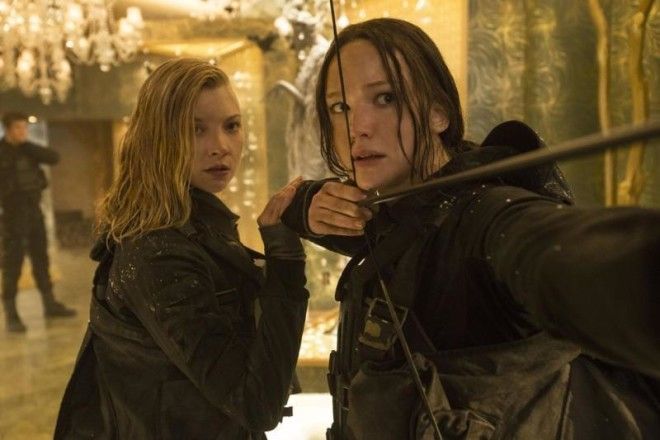
One of the key elements of all of Collins’s Hunger Games novels is their visceral depiction of the consequences of violence, and in the second half of Mockingjay, that is on especially vivid display: Characters are described as having holes in their faces; one character’s legs are unmistakably blown clean from his body; and a very young Capitol girl is cut down by gunfire while crying over her mother’s dead body. But those moments don’t have the same bloody jolt in the film.
“We always knew this was going to be the difficult one to tackle in terms of violence, because this is where the real themes of the consequence of war and violence come into play for the entire series,” said Lawrence. “There are a lot of hard things to watch that happen in this movie, and part of the success of the book was Suzanne didn’t flinch when she told these stories for teenagers. So you want to make it as intense as possible, but you also don’t want to cross over into that R rating where you’re alienating kids. So my goal was always to try to focus as much as possible on the emotional intensity and impact of the violence rather than the gore.”
One complicating factor, said Lawrence, is that the MPAA can give a film an R rating for “intensity” alone. “Even if it’s not bloody, [if] something just has enough impact and is intense enough, you can get an R rating for it,” he said. “That’s the thing that we were trying to find the right line for. … You’ll notice when you see the movie there’s very little blood. I was not interested in the glorification of violence or fetishizing the actual gore and carnage or seeing a lot of aftermath or blood hits and all of that. It was really about the consequence of it.”
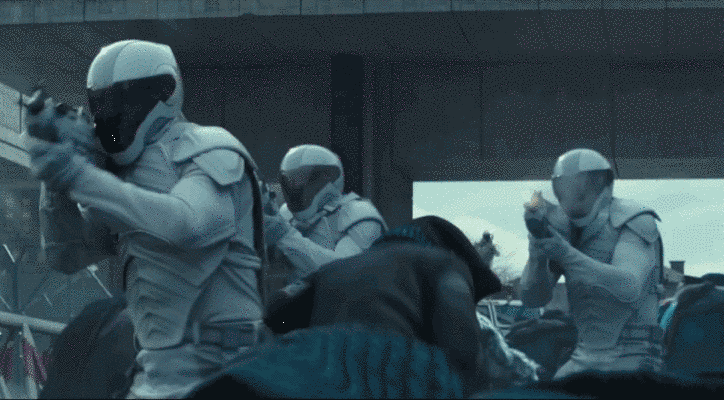
That careful depiction of violence is most notable in the rebels’ final surge toward Snow’s mansion, with Katniss, Gale, and the Capitol citizenry stuck in the middle. In Collins’s book, some particularly lethal pods massacre rebels and civilians alike in the ensuing battle, something the filmmakers thought would not work for their film. “You get this idea of, OK, well now Snow’s going to use his own citizens as a human shield and bring them all into the center of the Capitol, to the mansion — well, maybe they wouldn’t have pods on,” Lawrence recalled. “If he’s marching his own people, he’s not going to just kill them all.”
Jacobson also had a more macro reason for paring down this final battle sequence. “For me at least, in the third act of movies — the time that you’re supposed to find most exciting — I often feel bored,” she said. “Action that get disentangled from character — I find it some of the most boring parts of many big movies
Advertising
Giving Finnick a more heroic end
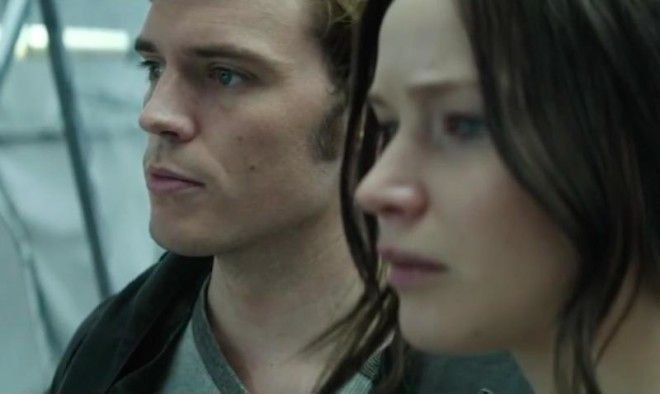
Of all the deaths in Mockingjay, arguably the most frustrating is Finnick’s, who abruptly perishes in a single paragraph when a pack of bloodthirsty reptilian mutts attack Katniss’s squad. So when it came time to craft the sequence for the film, the filmmakers had one clear objective. “Our biggest goal was to give Finnick as heroic a death as we possibly could, and to set everything up for that moment,” said Craig. “We structured everything so that Finnick could also clearly rescue everybody, basically carve a path for them to get to the ladder on the way out.”
To give Finnick’s death even more emotional weight, the filmmakers also reshuffled the order of the sequence from Collins’s book, counterintuitively putting Finnick’s death in the middle, before Katniss, Peeta, Gale, Cressida (Natalie Dormer), and Pollux (Elden Henson) emerge into a kind of Capitol subway station that includes even more pods and Peacekeepers.
“The thing that became appealing was, OK, let’s not give them time to grieve,” said Lawrence. “So you can’t have that emotional scene. Instead, you’re playing that emotion through: Oh shit, we still gotta get out of here. … Because we’re dealing with the consequence of war and violence, part of the way that these things play out — there’s something about the surprise of seeing something horrible, and then it happening in a flash, and the audience experiencing it the same way a character would. That kind of a moment of shock, and not being able to process it until much, much later.”
There was another consequence to changing up the order of events from Collins’s book, too. “It means people who’ve read the book aren’t on top of what’s going to happen next,” said Craig.
Deciding Prim’s fate
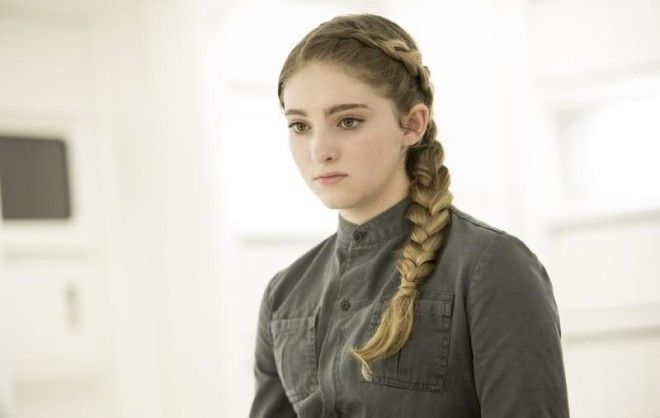
If Finnick’s death is the most frustrating, then the death of Prim (Willow Shields) — killed in front of Katniss by trick bombs likely designed by Gale — is the most devastating. Prim, however, does not appear much at all in the second half of the Mockingjay book. So the filmmakers decided to have Prim try to connect with the hijacked Peeta, rather than their District 12 friend Delly Cartwright — a character who has never appeared in any of the Hunger Games films.
“We felt like at this point we were pretty late in the game to introduce a whole new character,” said Craig. “Suzanne and Nina and Francis and I all talked about this. … Everybody liked Prim and thought well of her. And she has such a tragic end in this movie, [we did] anything we could do to get her in front of people as much as possible in the beginning.”
And in case you were wondering: No, none of the filmmakers ever considered not killing Prim. “No, never,” said Lawrence. “None of us ever fought for trying to save people who die in the book. For us, that’s all part of the thematics of the story.”
It wasn’t an easy decision, however. “I mean, honestly, the first time I read the book and Prim died, I was like, ‘Nooooooo!’” said Jacobson. “Very upset. Her loss is extremely painful. But the truth is, the pain of that loss and the unfairness of it, the cruelty of it, is so essential to the themes that Suzanne is trying to explore in the books. When Katniss says to Gale in their goodbye scene, ‘You can’t protect anyone in an arena,’ the arena has always been the metaphor for war. And innocent people suffer in war. That is such an important part thematically to the book that it’s really unimaginable to think about doing a movie without going there. Even though it is painful, it would be hugely missing the point to shy away from it.”
Navigating Katniss’s grief
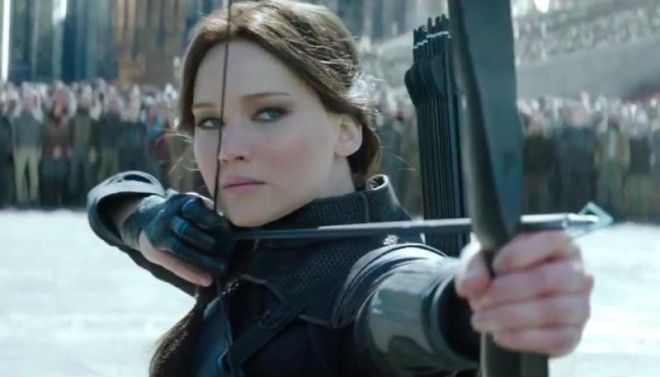
In the wake of Prim’s death in the Mockingjay book, followed by her decision to to kill Coin rather than Snow, Katniss spirals into a passive psychological morass. Burned in the explosion that killed Prim, her body becomes a patchwork of skin grafts and scar tissue. She goes mute, becomes a morphling addict, and fixates on her suicide, isolated for months while her trial for killing Coin unfolds without her knowledge.
None of that is in the film.
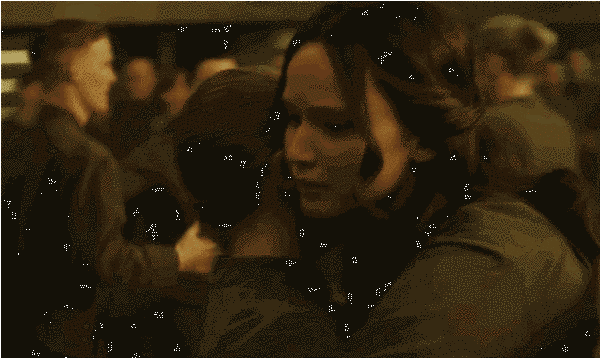
“The biggest challenge was that, in the book, you can get away with periods of passivity, because at least you’re in her head, and you can hear her thoughts,” said Jacobson. “In a movie, a passive hero, it’s deadly. The hero can’t do nothing. Once she’s made her decision [to kill Coin], the idea of taking an intense dramatic moment and following it with a long period of heroic passivity just seemed pretty much like a nonstarter. So we knew we needed her to be a bit more active. So then you got to the question of, like, OK, how are you going to do that?”
The solution? “We took that passivity in that section from the book, which is her internal life is very pained and painful, and miserable, and we convert it into a numbness,” said Jacobson. “She just can’t let herself feel anything until she finally sees [Prim’s cat] Buttercup, and that’s when it all comes out. And yet, she can’t heal either until she’s mourned. But she can’t even let herself mourn until she gets back home.”
Part of this decision was necessitated by the expectations that after Prim and Coin die, the story is, essentially, over — and a trial would prolong the film at exactly the wrong moment. “We’ve got to try to wrap it up pretty quickly, and so we couldn’t go into a whole other storyline there,” said Lawrence.
Deciding how to honor Philip Seymour Hoffman
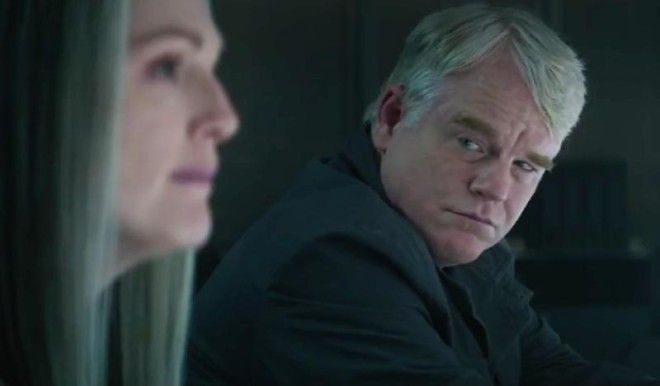
Hoffman died suddenly of a drug overdose on Feb. 2, 2014, when Mockingjay was still in production. Lawrence said, however, that Hoffman had shot all but two of his dialogue scenes — the most crucial of which comes at the end of Part 2, after Katniss has killed Coin, in which Plutarch expresses his hope that this civil war has quieted humanity’s “great gift for self-destruction” for good. So instead, Katniss’s old mentor Haymitch (Woody Harrelson) reads Katniss a letter from Plutarch, with the excuse that Plutarch could not be seen near Katniss in such a politically volatile moment.
“We thought those ideas were very important,” said Lawrence. “Suzanne actually came up with that idea, for the letter. That came up fairly quickly after Phil’s death.” Added Jacobson, “It was a way of still feeling his presence in the scene.”
There were also a handful of scenes in which Plutarch needed to appear but not speak, and Lawrence was clear that he was not going to use CGI to “fake” a performance from Hoffman. “All we could do is either rewrite a scene or find footage of him, which luckily we didn’t have to do too often,” he said. One example: At Snow’s execution, Plutarch watches with a knowing smirk after Katniss kills Coin, which Lawrence pulled from a scene from Mockingjay – Part 1.
Needless to say, the task of bringing Hoffman back to life, so to speak, was not something anyone particularly relished — or was all that eager to discuss. Lawrence did, however, note, “I will say, he would have been a much bigger presence in this movie had he still been alive.”
Letting Woody Harrelson be Woody Harrelson
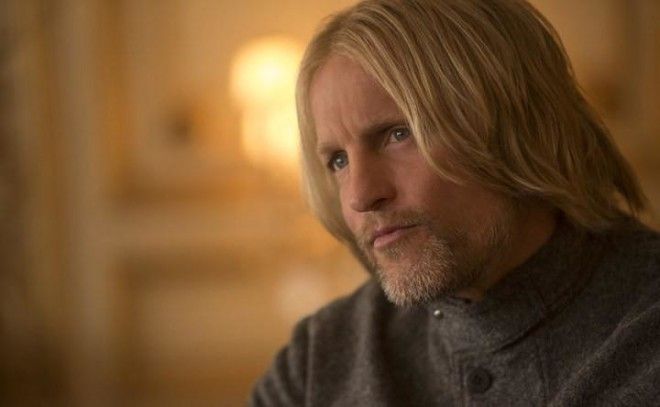
One big, crowd-pleasing moment at the end of Mockingjay – Part 2 that surprised even the filmmakers is when Haymitch says goodbye to Effie Trinket (Elizabeth Banks) by giving her an unmistakably amorous kiss.
“Woody Harrelson conspired to do [that], and didn’t tell anybody,” said Jacobson with a laugh. “I think Woody, who’s generally a funny, playful guy, decided at first he was doing it for fun. And then Francis and I just kind of looked at each other, like, it’s unexpected and kind of great. It always felt like there was some sort of spark between those two characters, and we decided it would be a great moment for the movie.”
Sticking the landing
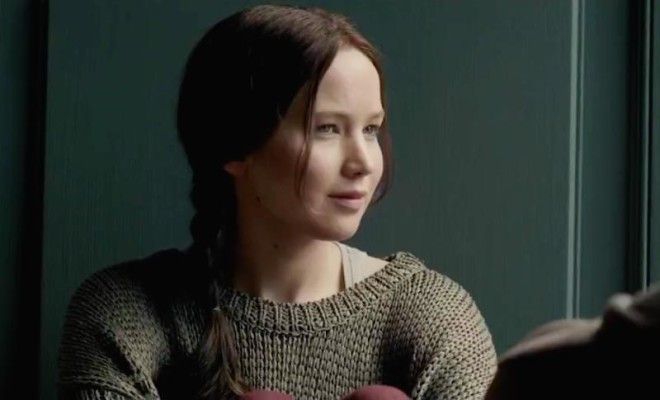
The final scene for any movie is always a fraught undertaking, especially for a scene meant to wrap up a four-movie franchise in a satisfying way that still honored all the hard-fought sacrifices that came before it. In Collins’s book, we jump ahead roughly 20 years to witness Katniss regarding her two young children with Peeta, contemplating how she could ever tell them about the life she led before they were born:
I’ll tell them how I survive it. I’ll tell them that on bad mornings, it feels impossible to take pleasure in anything because I’m afraid it could be taken away. That’s when I make a list in my head of every act of goodness I’ve seen someone do. It’s like a game. Repetitive. Even a little tedious after more than twenty years.
But there are much worse games to play.“I just remember so badly wanting her thoughts from the end of the epilogue in the book, and not wanting voiceover,” said Lawrence. “It just feels like the easy go-to thing.”
So instead, the film jumps ahead only five years or so, and one of Katniss’s children is an infant, whom Katniss speaks to while she watches Peeta play with their older child in a nearby meadow.
“She and Peeta kept each other alive,” said Craig. “That’s what they did, and that’s what they’re going to continue to do, and that’s what they’re going to do for their kids. So I think it’s hopeful at the end.”
